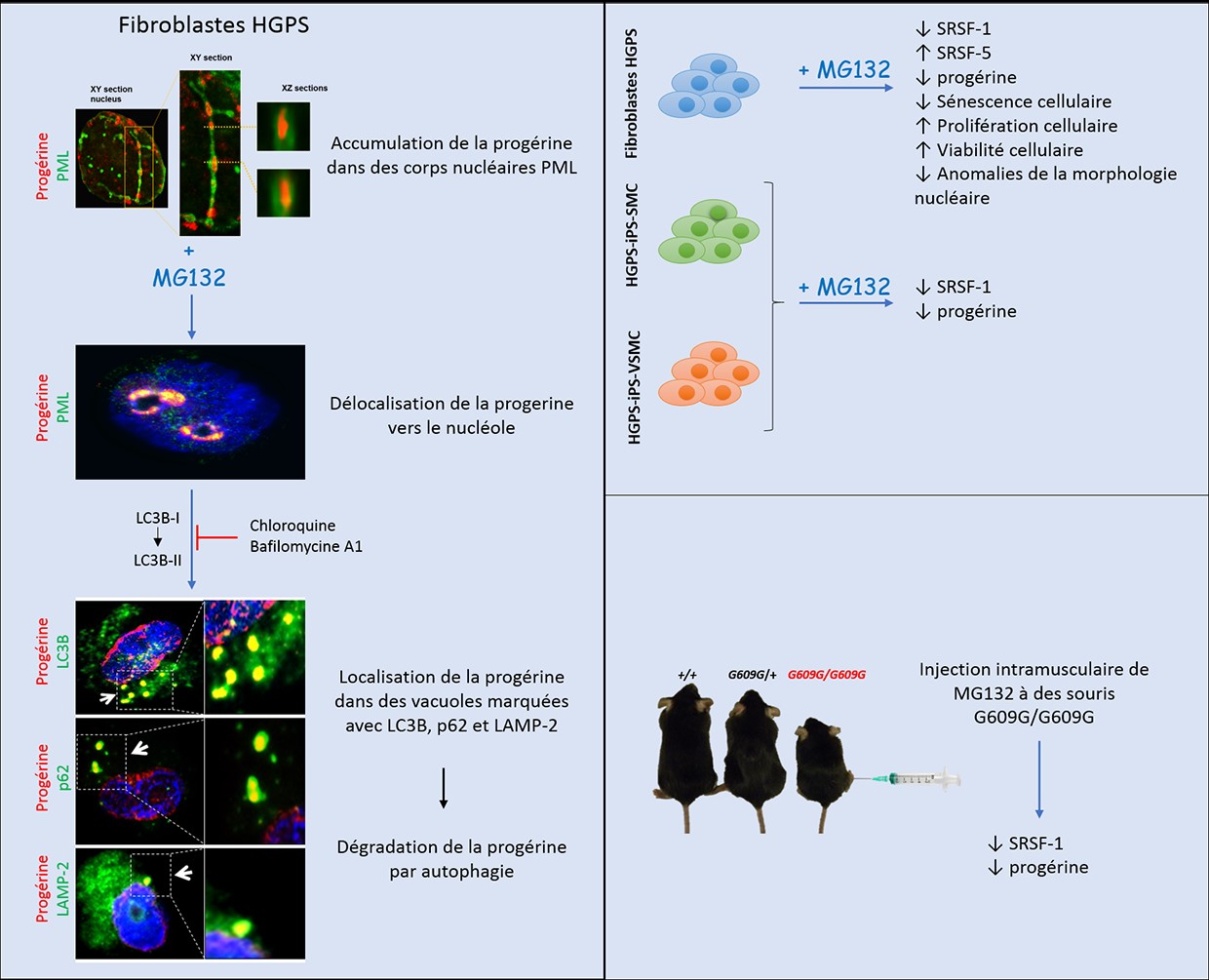Premature aging syndromes and lipodystrophies involving prenylated proteins
INSERM, U 1251Marseille Medical Genetics
Faculté de Médecine
27 Bd Jean Moulin
13385 Marseille Cedex 05
FRANCE - Marseille
Site web - nicolas.levy@univ-amu.fr -
Responsable d'équipe
Nicolas Levy, PU-PH (MD., PhD., HDR)

Thématiques de recherche
The main objectives of our INSERM U 1251 unit are, on the one hand, to study the genetic and physiopathological mechanisms involved in rare genetic pathologies and, on the other hand, to develop in vitro and in vivo therapeutic approaches and preclinical proof of concept in a translational research framework. Our laboratory is associated with the Department of Medical Genetics and Cell Biology (DGMBC) of Timone Children’s Hospital, led by Professor Nicolas Lévy, and has very close links with many other clinical departments and laboratories of the University Hospital Center and out of the University Hospital Center. Our laboratory brings together researchers, research professors and physicians and benefits from exceptional cohorts of samples of patients clinically characterized and included in the collections of the Center of Biological Resources “Tissues, DNA, Cells” (CRB-TAC) of the DGMBC, organization certified NF 96-900 and ISO 900. Most of our work, including the most fundamental, is part of a context of translational research, contributing to the diagnosis and management of patients, which constantly feed our projects research in order to better understand diseases, their possible prevention and their treatment in the context of the valorization of research results obtained, with the advice of INSERM Transfert or the SATT (Accelerate Transfer of Technologies). In 2003, Pr. Levy’s team identified the mutation responsible for Hutchinson-Gilford Progeria (HGPS, OMIM # 176670), a rare genetic disorder characterized by premature and accelerated aging (De Sandre-Giovannoli et al, 2003), and conducted in 2008 a European therapeutic trial for patients with Progeria, after the publication of the article demonstrating an effect of the molecules identified in vitro and in vivo (Varela et al, 2008). Furthermore, based on the LmnaG609G / G609G mouse model that our team developed in collaboration with Carlos Lopez-Otin (Spain, Oviedo), we obtained the preclinical proof of principle of the efficacy of antisense oligonucleotide treatment. (AON), reducing progerin production (Harhouri et al, 2016, Osorio et al, 2011).
In 2017, we have shown that progerin, a toxic protein whose accumulation causes Progeria, is sequestered in abnormally shaped promyelocytic nuclear bodies (PML-NB), identified as new biomarkers of Progeria. MG132 proteasome inhibitor induces progerin degradation through macroautophagy and greatly reduces its production by reducing SRSF-1 expression levels and increasing expression levels of SRSF-5, controlling aberrant splicing of Progerin precursor mRNA, prelamin A. MG132 treatment improves HGPS fibroblast phenotypes, reduces cell senescence, and improves the viability and proliferation of HGPS fibroblasts. Injection of MG132 into the skeletal muscle of the Progeria model mice (LmnaG609G / G609G) locally reduces progerin and SRSF-1 expression levels. Altogether, we demonstrate progerin reduction based on MG132 dual action and shed light on a promising class of molecules toward the development of a potential therapy for children with HGPS (Harhouri et al, 2017).
Figure descriptive


Publications
De Sandre-Giovannoli A, Bernard R, Cau P, Navarro C, Amiel J, Boccaccio I, Lyonnet S, Stewart CL, Munnich A, Le Merrer M et al (2003) Lamin a truncation in Hutchinson-Gilford progeria. Science 300: 2055
Harhouri K, Navarro C, Baquerre C, Da Silva N, Bartoli C, Casey F, Mawuse GK, Doubaj Y, Levy N, De Sandre-Giovannoli A (2016) Antisense-Based Progerin Downregulation in HGPS-Like Patients’ Cells. Cells 5
Harhouri K, Navarro C, Depetris D, Mattei MG, Nissan X, Cau P, De Sandre-Giovannoli A, Levy N (2017) MG132-induced progerin clearance is mediated by autophagy activation and splicing regulation. EMBO molecular medicine 9: 1294-1313
Osorio FG, Navarro CL, Cadinanos J, Lopez-Mejia IC, Quiros PM, Bartoli C, Rivera J, Tazi J, Guzman G, Varela I et al (2011) Splicing-directed therapy in a new mouse model of human accelerated aging. Science translational medicine 3: 106ra107
Varela I, Pereira S, Ugalde AP, Navarro CL, Suarez MF, Cau P, Cadinanos J, Osorio FG, Foray N, Cobo J et al (2008) Combined treatment with statins and aminobisphosphonates extends longevity in a mouse model of human premature aging. Nat Med 14: 767-772
Composition de l'équipe
Nicolas Levy, PU-PH, directeur de l’unité Inserm U 1251, chef d’équipe (nicolas.levy[at]univ-amu.fr)
Annachiara De Sandre Giovannoli, PH (annachiara.desandre-giovannoli[at]univ-amu.fr)
Patrice Roll, PU-PH (patrice.roll[at]univ-amu.fr)
Karim Harhouri, Postdoc (karim.harhouri[at]univ-amu.fr)
Sahar Elouej, Postdoc (sahar.elouej[at]univ-amu.fr
Elise Kaspi, MCU-PH (elise.kaspi[at]univ-amu.fr)
Catherine BARTOLI, IE (catherine.bartoli[at]univ-amu.fr)
Diane Frankel, doctorante (diane.frankel[at]univ-amu.fr)
Valérie Delecourt, doctorante (valeriedelecourt22[at]gmail.com)